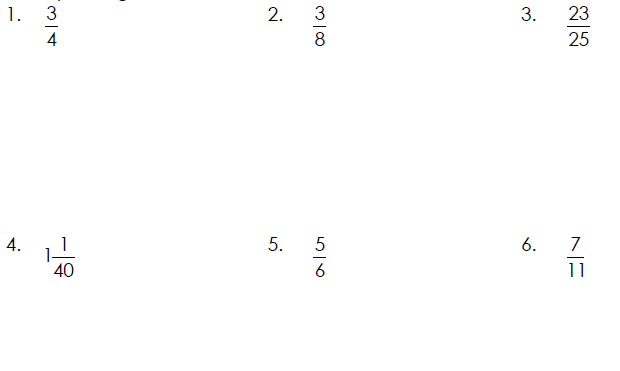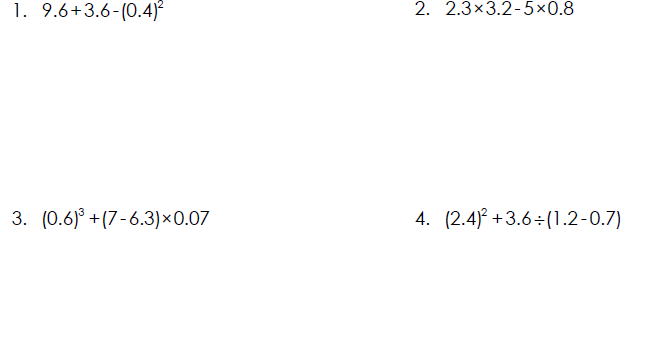Converting Fractions to Decimals and the
Order of Operations
Vocabulary
1. Terminating Decimals – Every fraction can be written as a decimal. If
the
division process of dividing denominator into numerator ends with a
remainder of zero, the decimal is a terminating decimal. Decimals such as
1.28, 0.007856, and 5.123 are terminating decimals.
2. Repeating Decimals – Decimals that have a digit or a group of digits
that
repeat. The decimals 0.3333333333… and 1.234234234234… are repeating
decimals. The pattern of repeating continues forever. Repeating decimals
can be written in the form with a bar over the repeating digit(s). Thus the
preceding decimals could be written as  .
.
Converting a Fraction to an Equivalent Decimal
Divide the denominator into the numerator until
a. The remainder becomes zero, or
b. The remainder repeats itself, or
c. The desired number of decimal places is achieved.
Write as an Equivalent Decimal
If a repeating decimal is obtained, use notation such as


Write as an Equivalent Decimal or Decimal Approximation
Round your answer to the nearest thousandth if needed.

Using the Order of Operations with Decimals (PEMDAS)

Applications
1. A master carpenter is re-creating a room for the set of a movie being filmed.
He is using a burled maple veneer 7/16 inch thick. The designer specified
maple veneer 0.45 inch thick. Is the veneer he is using too thick or too thin?
By how much?
3.6 Homework
Pages 249–251 #1, 9, 21, 23, 31, 41, 47, 51, 55, 59, 63, 69


 .
.


